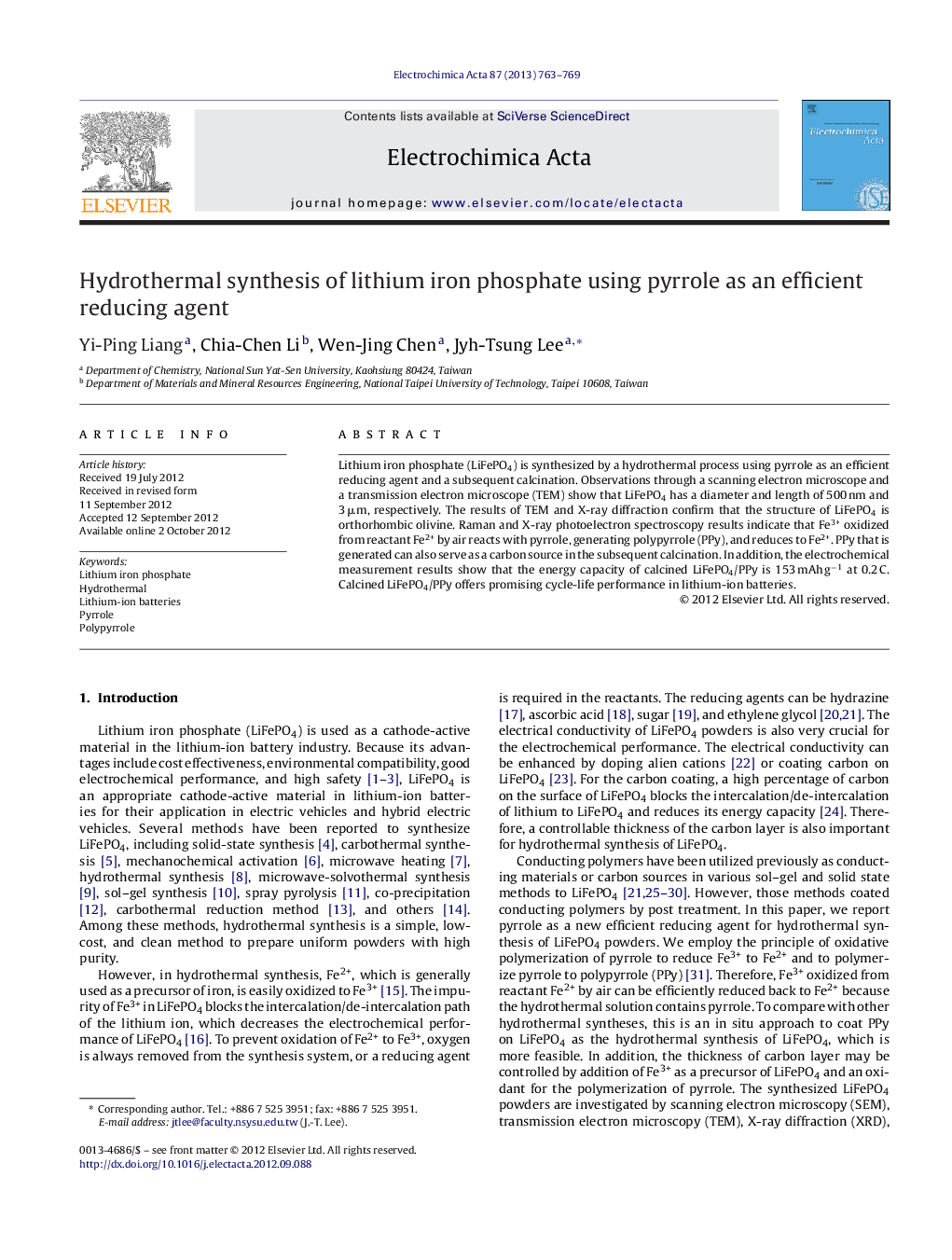| کد مقاله | کد نشریه | سال انتشار | مقاله انگلیسی | نسخه تمام متن |
|---|---|---|---|---|
| 188051 | 459651 | 2013 | 7 صفحه PDF | دانلود رایگان |

Lithium iron phosphate (LiFePO4) is synthesized by a hydrothermal process using pyrrole as an efficient reducing agent and a subsequent calcination. Observations through a scanning electron microscope and a transmission electron microscope (TEM) show that LiFePO4 has a diameter and length of 500 nm and 3 μm, respectively. The results of TEM and X-ray diffraction confirm that the structure of LiFePO4 is orthorhombic olivine. Raman and X-ray photoelectron spectroscopy results indicate that Fe3+ oxidized from reactant Fe2+ by air reacts with pyrrole, generating polypyrrole (PPy), and reduces to Fe2+. PPy that is generated can also serve as a carbon source in the subsequent calcination. In addition, the electrochemical measurement results show that the energy capacity of calcined LiFePO4/PPy is 153 mAh g−1 at 0.2 C. Calcined LiFePO4/PPy offers promising cycle-life performance in lithium-ion batteries.
► Pyrrole is used as efficient reducing agent for hydrothermal synthesis of LiFePO4.
► Addition of pyrrole reduces Fe3+ to Fe2+.
► Pyrrole polymerizes to polypyrrole, creating a carbon source.
► LiFePO4 has high electrochemical performance in lithium-ion batteries.
Journal: Electrochimica Acta - Volume 87, 1 January 2013, Pages 763–769